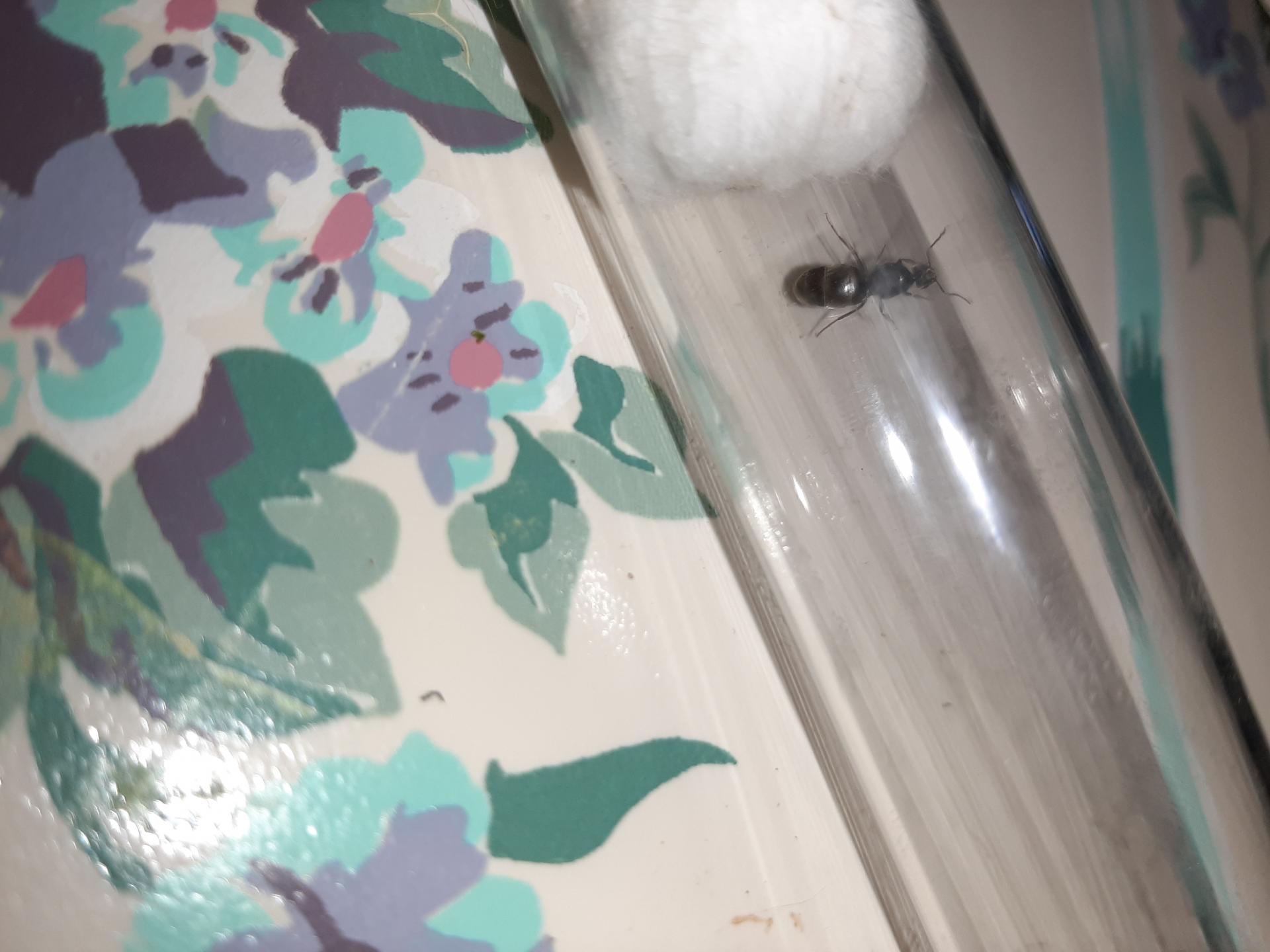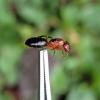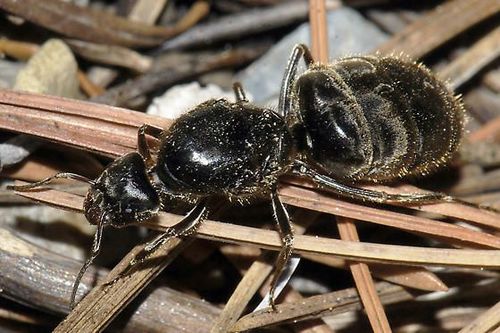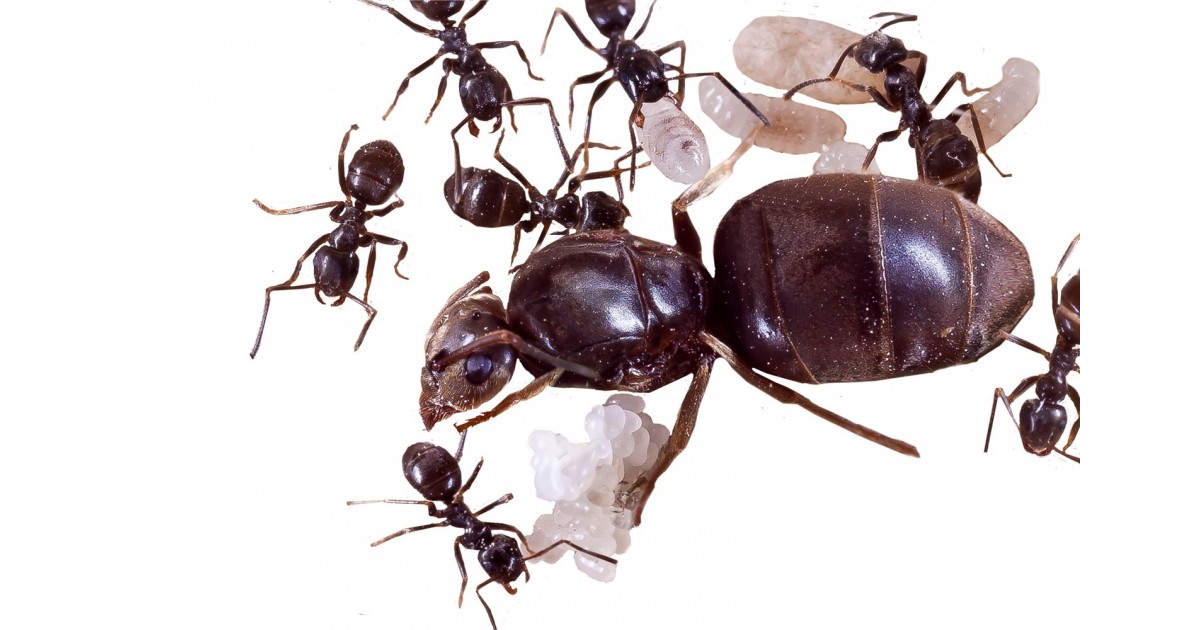Hey, so I live near Denver but I'm on vacation up in the mountains. I found two queens that need to be IDed. Here is the second...
1. Twin Lakes Colorado
2. Date of collection: Aug. 2nd
3. Habitat of collection: Dry desert area kind of, there are pine trees but overall pretty dry.
4. Length (from head to gaster): I'm up in a cabin with no ruler so unfortanately I can't provide this. I will get it when I get home. EDIT: 10 mm...
5. Color, hue, pattern and texture: Average head and thorax, brown, and shiny, but not that shiny.
6. Distinguishing characteristics: Very elongated gaster, it is brown with stripes.
7. Distinguishing behavior: Whenever I found her, there was another queen of the same species right next to her which makes me think it might be polygynus. Oh, and it definately wasn't from a nest, there were no workers around.
8. Nest description: I found this queen under a rock.
9. Nuptial flight time and date: IDK about the flight, this queen was a dealate. I found it around 2:00 PM
 :
:
Sorry, not the best picture. ![]() Looks like lacius maybe?
Looks like lacius maybe?
Edited by Devi, August 4 2020 - 12:59 PM.

























